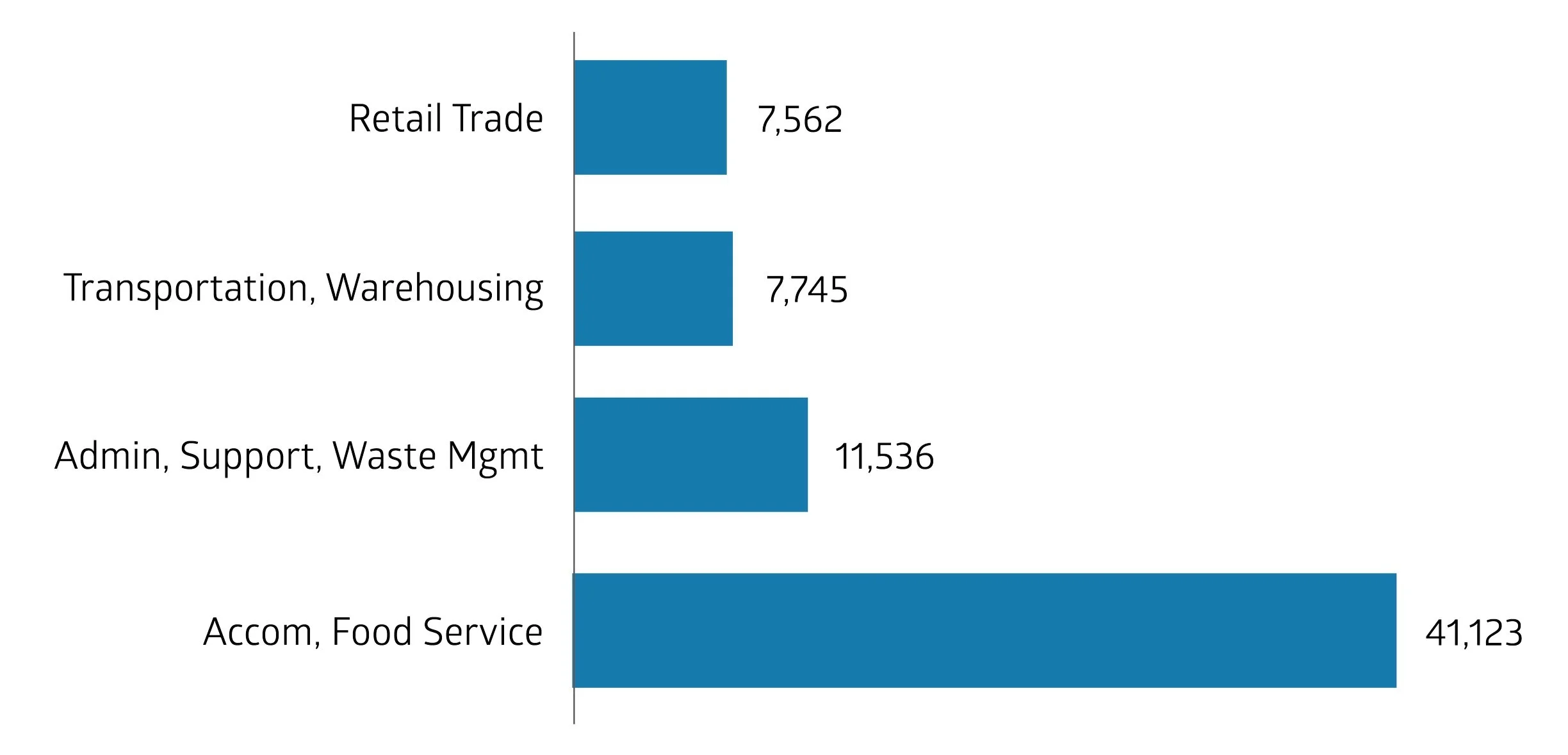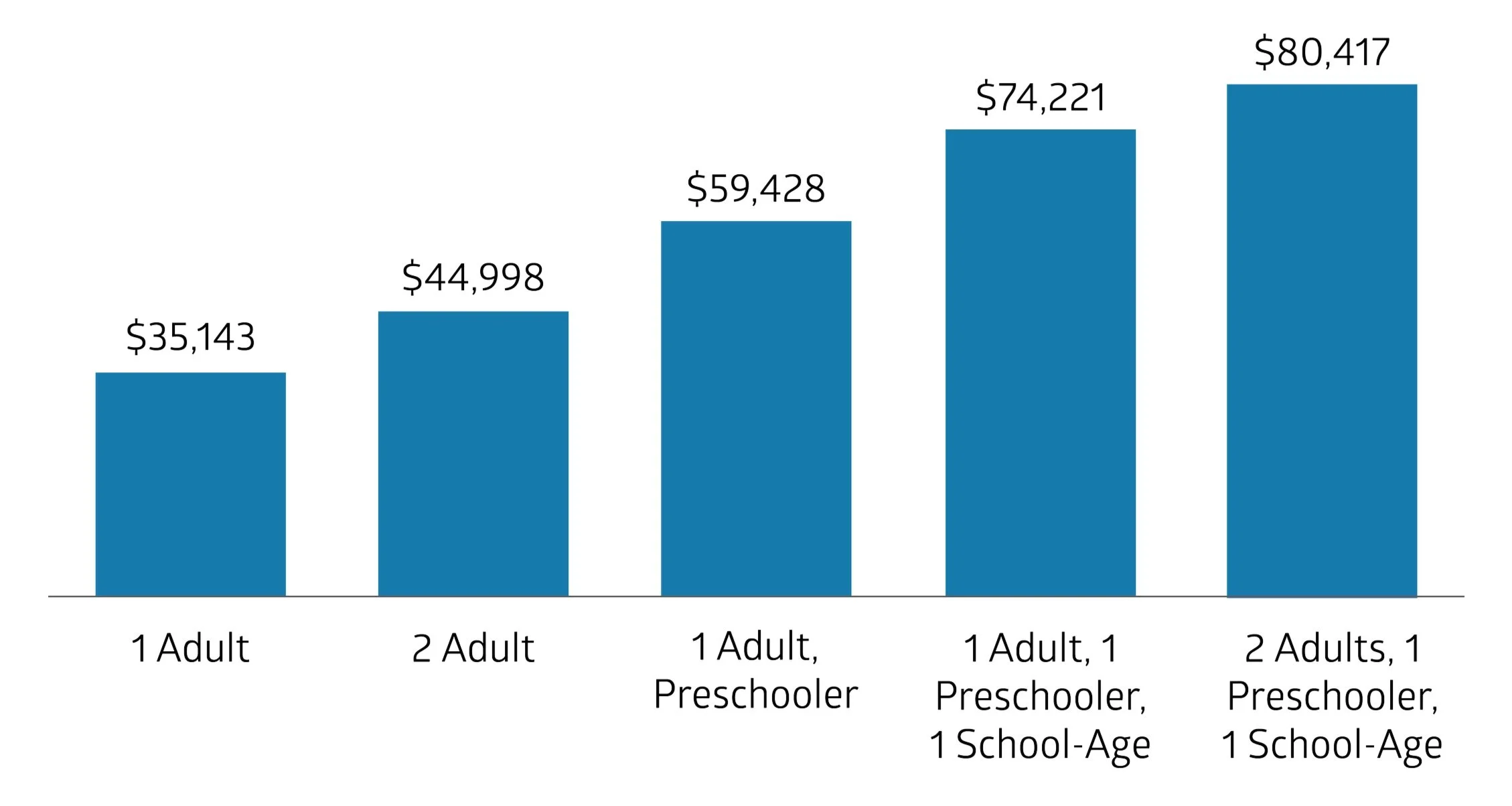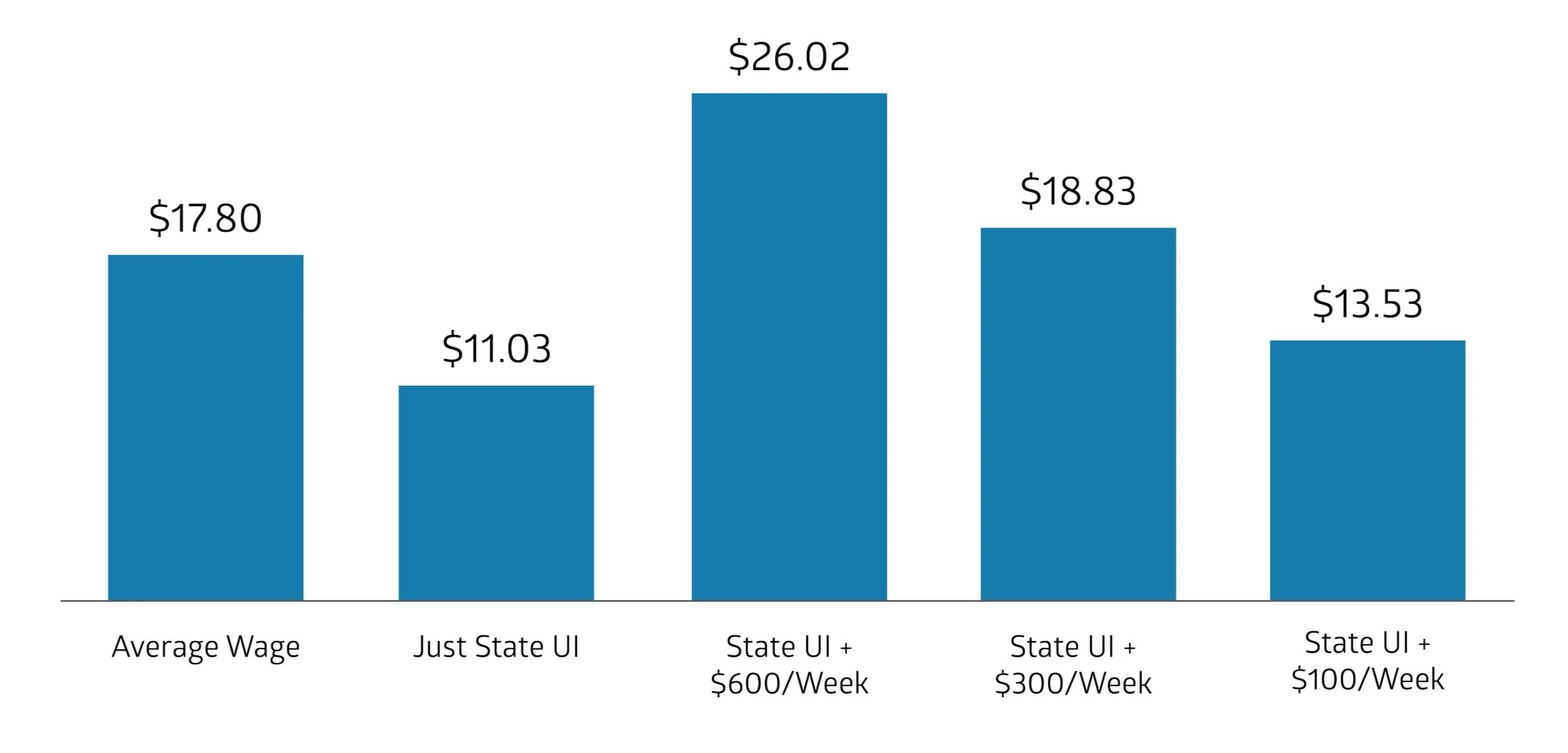Unemployed workers in Hawaiʻi can’t wait for Congress
The federal CARES Act allocated more than $2 trillion in economic relief to individuals and businesses, including providing for a temporary enhancement of state unemployment benefits for those left jobless by the COVID-19 pandemic. People who lost employment, including those with independent contractor or gig work, got an extra $600 per week added to regular unemployment benefits—until the end of July.
These supplemental payments have been a lifeline to 200,000 people in Hawaiʻi who filed for unemployment insurance (UI) and Pandemic Unemployment Assistance (PUA) benefits for contractors or gig workers. In mid-July, the number of UI claims totaled nearly 131,000 and more than 80,000 workers were benefiting from PUA. The $600 per week bump also pumped money into Hawaiʻi’s faltering economy—an estimated $1.5 billion between April and July—so the loss of benefits has implications for economic recovery beyond the relief provided to households.
As of this writing, Congress has not agreed to continue the $600 per week supplement past July, although negotiations continue. In an effort to provide a fallback safety net, the state legislature agreed to use some of the federal Coronavirus Relief Funds available to Hawaiʻi to increase state unemployment benefits by $100 per week from August through December, should Congress fail to reauthorize the UI enhancement. However, Governor Ige vetoed that part of the budget bill passed by the legislature last month.
The $100 UI add-on would have been very welcome to unemployed workers since Hawaiʻi’s base UI benefit is only 62 percent of salary. Even so, that subsidy would leave a big gap between wages and UI benefits. Starting now, thousands of families are scrambling to make ends meet can’t reach for the the usual remedy of taking on another part-time job.
The UI benefit gap will fall especially hard on the very workers most likely to be unemployed. That’s because they are generally the workers earning the lowest wages. The four occupations with the highest unemployment rates in June 2020 are shown in Figure 1. Together, they account for 59 percent all UI filers. Collectively, their average hourly wage was $17.80, which is 15 percent less than median wage for Hawaiʻi (in 2018).
Figure 1. Occupations with Highest Unemployment, June 2020
Figure 1. Occupations with the highest unemployment rate in Hawaiʻi with number of jobs lost. Collectively, they make up 59% of unemployment filers that month.
Hawaiʻi continues to be the most expensive state in which to live. In 2018, the self-sufficiency budget for Hawaiʻi, that is the minimum needed to afford housing, food and other essentials, ranged from about $35,000 to over $80,000, as shown in Figure 2.
Figure 2. Hawaiʻi Average Self-Sufficiency Budget, 2018
Figure 2. Making ends meet in Hawaiʻi is expensive. The minimum amount needed for a household to meet expenses ranges from $35,143 (or $16.90 per hour) to $80,417 ($19.33 per hour for each of two adult earners).
The gap between household needs and UI benefits is significant. The average wage is $37,024 ($17.80 per hour) for a person working in the occupations where unemployment is now highest. This unemployed person will have to get by on less than $23,000 ($11.03 per hour) now that only state UI benefits are available. That’s a 38 percent loss in income for a worker already making less than median wage. It is clear that the state needs to provide a bigger weekly benefit if Congress doesn’t act immediately.
Figure 3 shows how the average unemployed worker in one of these high unemployment occupations would fare with just state UI, with the $600 per week bump-up, if a $300 per week increase is made available, and if $100 per week extra were provided, as proposed by the legislature. Bear in mind that the unemployed worker now has to pay for health insurance and other costs that may have been provided by their employer.
Figure 3. Wages and UI Benefits for Occupations with the Highest Unemployment Rates
Figure 3. An unemployment benefit enhancement of at least $300 per week is needed to match or exceed the average hourly wage for a worker previously employed in one of the four occupations with the highest unemployment.
Hawaiʻi has more than 200,000 unemployed workers and contractors. They cannot afford to wait for an ideologically divided Congress to act. The state must move now to offer immediate support for these workers and their families.



